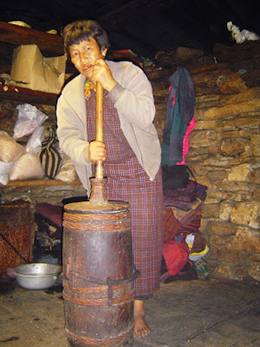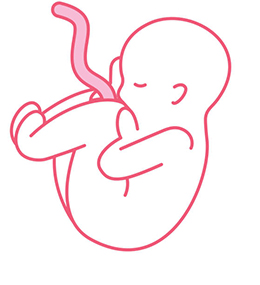Reflections
Namaskar: Union
Abstract
Palms joined, hands folded, opened, as to reveal the concealed. So are the Words and everything in this earthly life and living found to reveal, in a Moment of Inspiration, as a Movement of Grace. To arrive at a truth of a Construction it seems a de-construction, and not a destruction of the same is essential, without which the immense concealed in the Construction we cannot redeem. Separation, though superficial, is essential for the joy and the Truth of Ultimate Union and Unity: as repeatedly we are reminded and assured of. Always, what is hiding and hidden is much more than the revealed, beckoning us to find and be healed. Such has it been with the Word, Namaskar, its reflection, its call.
Well, a ‘reflection’, it is, of Namaskar, as it surfaced when it did, dawned or down-poured, as a Movement of Grace — of course, received and reflected as was, and as now is, the mirror praying that it is “least defaced (1),....”
There is something in the Words which intrigue, perplex, enlighten, delight and... what not and what else they evoke and inflict, provoke and invoke, induce and incite... These seem to hide, hidden by the Words and consequent to the human obscurity, — Ignorance-bred, Ignorance-led, Ignorance-fed, — and thus so hidden and gradually or suddenly revealing to and in the individual consciousness which reflects and is reflected by the collective consciousness and the universal consciousness.
Or is it too a part of the Divine Design, this hide-and-seek prevalent and pervading every aspect, every fibre of this earthly life?
Thus, maybe, something occult is felt to be in the Words, and in their coming into being...
This too, a “living power of the incarnate Word (2)”?
How else could the Words be “living” and healing?
Words Heal
True, Words do not, and perhaps cannot, express and describe everything. In fact, often, if not always, in trying to explain and describe, we fall into the trap of mentalising that which is above and beyond the mental domain. There is thus distortion and falsity, much dilution and adulteration by the mind and its representative, the brain...
“A little spoilt by the receiver mind
Or mixed with the manufacture of his brain (3);”
The mind churns… and turns and returns... interfering and interrupting, editing and correcting, in a constant buzz, in trying to reach and claim that it has, and has found the Truth. While, “Silence is all, say the sages (4).”
And yet and therefore, from this Silence arises all... as the Truth is not Truth if it is partial, and thus, has room for Words too!
“The silence of the Ineffable is a truth of divine being, but the Word which proceeds from that silence is also a truth, and it is this Word which has to be given a body in the conscious form of the nature (5).”
The Words thus, too, are with a Purpose and hence, are on a Mission!
No wonder then, we seek and yearn, strive and aspire, call and cry, pray and even demand, even unbeknownst to the surface consciousness, for answers, for Words explicitly... and then, when they come, “A moment sees (6)...” , “And the hushed heart hears the unuttered Word (7).” All in the being is calmed, all is filled with a thrill that stills as well, all feels healed, moved to tears, all is clear... the heart overflows with gratitude... and many more are the hues of emotion welling up from the heart...
Momentary, maybe, but undeniable, un-mistakable...
Such has it been with Namaskar.
Namaskar: What It Was
It is said that one reads (and receives) that which one is meant to, when one is meant to… this ‘meant to’ meaning one’s readiness, the readiness perhaps of the individual consciousness. Though, whether there is and can be anything for the individual consciousness alone, in isolation, is questionable.
Such was a moment perhaps when I got to read (maybe years ago) this explanation for Namaskar: When one folds one’s hands and joins the palms, on meeting someone, in a Namaskar or Namaste, it is an acknowledgment of the Divinity in that being by the Divinity in oneself.
This, one could say that starts in many cases as a ‘ritual’, perhaps a sanskar, — of showing respect to another human being, — as and in the form that it is passed on and been perpetuated through the generations... maybe mechanically, till it becomes a conscious act. And yet, even when conscious it is and has become, it stays at the intellectual and moral levels, and as an expression of general goodness and goodwill, before it becomes spontaneous, when truly one sees the Divine in others — and maybe only when one is conscious of and lives always with the Divine in oneself. We are told and retold of this, by all who have so realised.
No more is the duality experienced or accorded attention... The tension, that kept alive the superficial cord of separation, snaps and has snapped and the snapshot is of the Same One in the other: no more ‘an other’.
“... the divine spark is at the centre of each atom (8)...”
Namaskar: What It Is
Namaskar = Namah + Akar.
This is how It came, or rather, reflected or was reflected... consolidating and elaborating and explaining Itself as: When this Namah, a Pranam with joined hands and folded palms, takes Akar, shape, it is the Union — a decimation, an elevation, a transformation of the superficial division, separation, within and hence, without.
Now, I could have Google-searched for the correctness of the construction and thus, of the de-construction, so as to get to the construction of the Word, Namaskar. But instead, with a childlike petulance and joy, perhaps, refrained, banking on the memory of schooldays’ lessons in and learning of Sanskrit, of those lessons in word construction and de-construction, sandhi and sandhi vichhed. So, if grammatically it is incorrect, then, do I apologise or levy the blame on the memory?! Perhaps, that matters not that much, here… It is what it revealed and impressed (even if and in case there is no validation in the dictionary), that matters too... Experiences defy norms, don’t they? That, though, doesn’t justify or invite a deliberate bashing of norms!
Coming back to the point: it is always a search, it seems, to join again with the umbilical cord... the pain (conscious or otherwise) of the severing, severe, in all the parts and planes of the being, felt not the least by this instrumental Body of the Divine.
The pangs of labour, for delivering oneself, as and by the One, for getting delivered by and as the Union, the ‘Uni-one’, the Universal One, is so intense...
“This is our deepest need to join once more What now is parted, opposite and twain, Remote in sovereign spheres that never meet
Or fronting like far poles of Night and Day (9).”
When, “darkness has room no more (10)”,
And finally,
“I move in an ocean of stupendous Light,
Joining my depths to His eternal height (11).”
It is a Call and Namaskar to that Moment, to the One, — the Him, the Her, the It, in and as the Moment, as the One chooses to reveal and manifest Oneself to one..., — to Manifest, so that all may heal, so that all chasms may be sealed, all spasms transformed into ecstasy in the embrace of Unity with the Divine, in an Inner Namaskar enfolding one in the One.
“Two to clasp, One to be, this His strange mystery (12).”
References
1. Sri Aurobindo. The Complete Works of Sri Aurobindo, Volume 33-34. Pondicherry: Sri Aurobindo Ashram Trust; 1993, p. 542.
2. Ibid., p. 693.
3. Ibid., p. 542.
4. Sri Aurobindo. Complete Works, Volume 2; 2009, pp. 644-45.
5. Sri Aurobindo. Complete Works, Volume 23-24; 1999, p. 707.
6. Sri Aurobindo. Complete Works, Volume 33-34, p. 315.
7. Ibid.
8. The Mother. The Collected Works of the Mother, Volume 4. 3rd ed. Pondicherry: Sri Aurobindo Ashram Trust; 2003, p. 139.
9. Sri Aurobindo. Complete Works, Volume 33-34, p. 56.
10. Sri Aurobindo. Complete Works, Volume 2, p. 618.
11. Ibid.
12. Ibid., p. 637.
Sushmita Mukherjee is a writer and an aspirant based in Kolkata.
Share with us (Comments,contributions,opinions)
When reproducing this feature, please credit NAMAH,and give the byline. Please send us cuttings.




